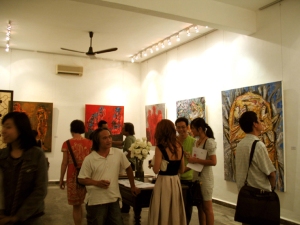 Whether you’re in the actual capital of Hanoi or in the commercial capital of Ho Chi Minh City, in the mountainous northern precincts or the sand-swept southern coastal areas, evidence of style abounds in Vietnam. It’s in everything from what the Vietnamese wear, such as the elegant ao dai, to the architecture of the buildings.
Whether you’re in the actual capital of Hanoi or in the commercial capital of Ho Chi Minh City, in the mountainous northern precincts or the sand-swept southern coastal areas, evidence of style abounds in Vietnam. It’s in everything from what the Vietnamese wear, such as the elegant ao dai, to the architecture of the buildings.
It should come as no surprise. Not when the country’s storied history is examined even somewhat closely.
Vietnam’s affinity for style — and, by extension, art — can be traced as far back as 8,000 BC, when experts believe this part of the world began creating pottery. Over the years, Vietnam’s art has been most influenced by China (Confucianism) and France, which ruled Vietnam from the late 1800s until the mid 1900s.
But what’s developed is a country with a personality all its own. For proof, one need look no further than some of Vietnam’s must-visit galleries.
In the western suburbs of Hanoi, Nha San Duc has been hosting local and international artists for years now. The two-story ‘house on stilts’ includes old statues and artifacts — many of which are for sale — and serves as a venue for exhibitions, installations and performances.
In Ho Chi Minh City’s first district, Craig Thomas Gallery is where it’s at for those with a passion for art of a more contemporary kind. The founder moved to Vietnam in 1995, became actively involved in the city’s art scene in 2002, and opened the gallery in 2009.
That’s also when Tadioto debuted in Hanoi. Owned by Nguyen Qui Duc, who worked as a journalist in the U.S. before returning to Vietnam, the six-story space is where to go for everything from live music showcases and literary readings to photo exhibitions and late-night cocktails.




Vietnam is in my list and in the process of collecting information. Thanks for sharing 😉